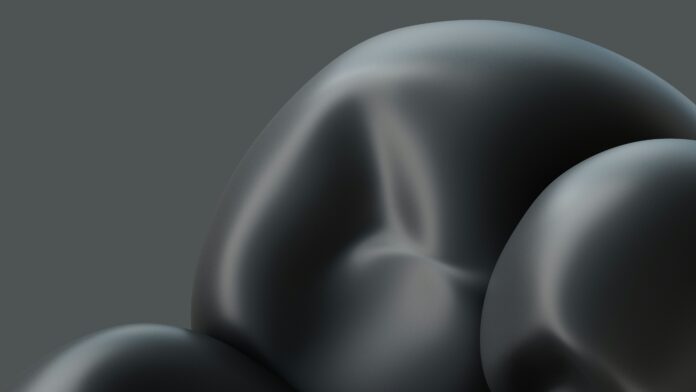Space weathering refers to the cumulative effects of various processes that occur in space and alter the physical and chemical properties of planetary surfaces, asteroids, and other celestial bodies. These processes primarily affect objects without significant atmospheres or magnetic fields, such as the Moon, asteroids, and Mercury. Understanding space weathering is crucial for interpreting the surface properties of these bodies, which in turn provides insights into their geological history and evolution. Here are ten important aspects of space weathering:
Impact of Solar Wind
Space weathering is heavily influenced by the solar wind, a stream of charged particles (mostly protons and electrons) emitted by the Sun. When these particles collide with the surface of a planetary body, they can induce chemical reactions and alter the surface composition. Solar wind also contributes to erosion processes by sputtering and implantation of ions into surface minerals.
Micrometeorite Bombardment
Another significant factor in space weathering is micrometeorite bombardment. Micrometeoroids, tiny particles of dust and rock, constantly impact planetary surfaces at high velocities. These impacts can cause shock metamorphism, fragmentation of surface materials, and production of fine-grained regolith (surface debris).
Creation of Nanophase Iron Particles
One of the most notable effects of space weathering is the creation of nanophase iron particles (NPFe⁰), which are extremely small iron grains produced by the interaction of solar wind protons with iron-bearing minerals on the surface. These nanoparticles are thought to be responsible for spectral reddening and darkening observed in the regolith of airless bodies like the Moon.
Surface Darkening and Spectral Changes
As a result of nanophase iron particle formation and other processes, space weathering often leads to surface darkening and changes in the reflectance spectra of planetary surfaces. This spectral alteration affects the interpretation of remote sensing data and can obscure the true composition of surface materials.
Impact on Physical Properties
Space weathering affects not only the chemical composition but also the physical properties of planetary surfaces. It can alter the surface texture, thermal conductivity, and mechanical strength of regolith layers. Understanding these changes is crucial for planning future robotic or human missions to these bodies.
Temporal Evolution
The effects of space weathering are not static but evolve over time. Surface exposure ages, the duration of exposure to space conditions, affect the degree of weathering. Younger surfaces tend to exhibit fewer weathering effects compared to older surfaces, which have been exposed to space weathering processes for longer periods.
Comparative Planetology
Studying space weathering across different planetary bodies allows scientists to compare the effects of varying environmental conditions (such as solar wind intensity and gravitational influences) on surface weathering processes. This comparative planetology provides insights into the diversity of planetary surface processes and their implications for planetary evolution.
Implications for Astrobiology
Space weathering influences the preservation of organic molecules and other potential biosignatures on planetary surfaces. Understanding the extent and nature of weathering processes is crucial for assessing the habitability of celestial bodies and the potential for past or present life beyond Earth.
Instrumentation and Techniques
Developing and refining instruments and techniques for studying space weathering is essential for advancing our understanding of planetary surfaces. Remote sensing instruments, laboratory simulations, and sample return missions all play critical roles in investigating the effects of space weathering.
Future Exploration and Research
Future exploration missions, such as NASA’s Artemis program aimed at returning humans to the Moon, will rely on a deep understanding of space weathering effects to plan safe and effective operations. Continued research into space weathering processes will also inform the design of spacecraft and equipment intended for prolonged exposure in space environments.
Space weathering, a phenomenon crucial to planetary science, continues to intrigue researchers as they delve deeper into its complexities and implications. At its core, space weathering encompasses a range of processes that alter the surfaces of airless bodies like the Moon, asteroids, and Mercury. These processes are predominantly driven by interactions with the solar wind—a constant stream of charged particles from the Sun—and impacts from micrometeoroids. The solar wind, composed primarily of protons and electrons, bombards planetary surfaces, inducing chemical reactions and physical changes in surface materials. This interaction results in the creation of nanophase iron particles (NPFe⁰), which are responsible for the spectral reddening and darkening observed in regolith.
Micrometeoroid impacts, on the other hand, contribute to shock metamorphism and the creation of fine regolith particles, further altering surface properties. Over time, these processes collectively lead to a transformation of surface texture, spectral reflectance, and mechanical characteristics. Understanding these changes is vital for interpreting remote sensing data and planning future exploration missions to these celestial bodies. For instance, spacecraft missions like NASA’s Lunar Reconnaissance Orbiter (LRO) and Japan’s Hayabusa2 have provided valuable insights into the extent and nature of space weathering on the Moon and asteroids, respectively.
The temporal evolution of space weathering plays a significant role in its impact on planetary surfaces. Younger surfaces exhibit fewer weathering effects compared to older surfaces, which have been exposed to space conditions for extended periods. This age-related variation underscores the importance of considering surface exposure histories when studying space weathering effects. Comparative planetology, which involves studying weathering across different planetary bodies with varying environmental conditions, provides valuable insights into the broader implications of these processes.
Beyond its geological significance, space weathering has implications for astrobiology. The alteration of surface materials can affect the preservation of organic molecules and potential biosignatures, influencing our understanding of planetary habitability. Moreover, the study of space weathering informs the development of instrumentation and techniques for planetary exploration. Remote sensing instruments, laboratory simulations, and sample return missions are integral to advancing our understanding of space weathering processes and their impact on planetary surfaces.
Conclusion
Looking ahead, future exploration missions will continue to push the boundaries of our knowledge of space weathering. Projects like NASA’s Artemis program, with its goal of returning humans to the lunar surface, will rely heavily on understanding space weathering effects to ensure mission success and safety. Continued research into space weathering processes promises to uncover new insights into planetary evolution and the potential for life beyond Earth, shaping our understanding of the universe and our place within it.














